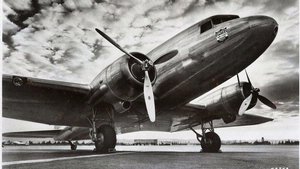Pioneering Moments
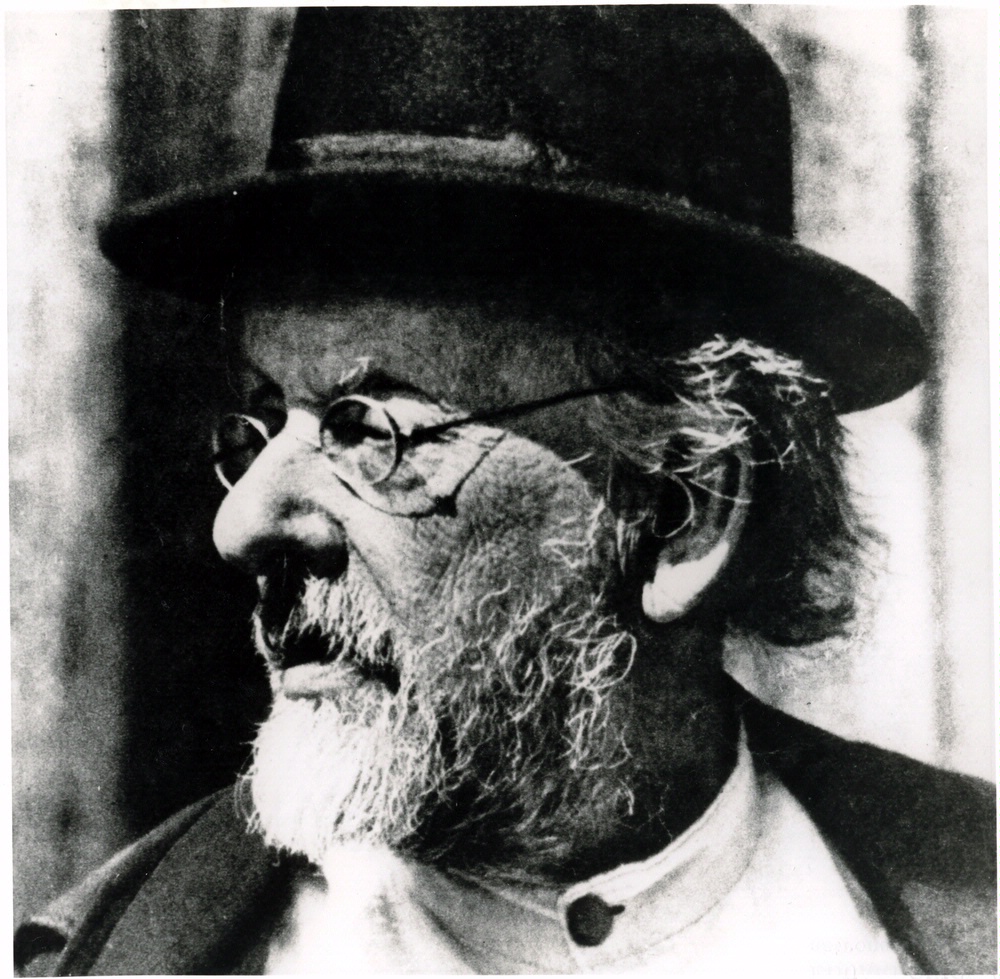
Tsiolkovsky Publishes Proof That Rockets Can Launch Things into Space
Tsiolkovsky was probably the first person to realize the rocket was the means to travel into space, and the first to work out many essential principles. Deaf since childhood, he became a high school mathematics teacher. He theorized about airships and rockets beginning in the late 1800s and published his spaceflight ideas in Russian as early as 1903, (Study of Space by Reaction Devices). The communist government that emerged in Russia in 1917 eventually proclaimed Tsiolkovsky as the father of Soviet rocket technology.
- First automobile crossing of the US
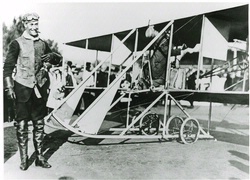
The First American Transcontinental Flight
A $50,000 Prize and a Pilot Named Cal… In 1910 publishing magnate William Randolph Hearst captured the attention of the aviation world when he announced a $50,000 prize for the first flight across the United States in 30 days or less. A newly licensed pilot named Calbraith Perry Rodgers, a descendant of famous U.S. Navy commodores Matthew Calbraith Perry and Oliver Hazard Perry, decided to take up the challenge. Rodgers covered the 4,321 miles in 82 hours and 4 minutes of flying time. Unfortunately, he far exceeded the 30-day limit set by Hearst and lost out on the $50,000 prize. He did secure his place in history by making the first U.S. transcontinental flight. “I expect to see the time when we shall be carrying passengers in flying machines from New York to the Pacific Coast in three days.” Cal Rodgers
- First running of the Indianapolis 500
- HMS Argus, the first aircraft carrier, enters service with the Royal Navy
- World War I hostilities ended
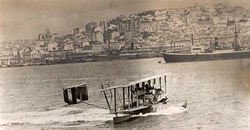
The First Flight Across the Atlantic
The U.S. Navy achieved the first transatlantic flight eight years before Charles Lindbergh became world famous for crossing the Atlantic nonstop and alone. Three Curtiss flying boats, each with a crew of six, were involved: NC-1, NC-3, and NC-4. The Navy wanted to prove the capability of the airplane as a transoceanic weapon and technology. The five-leg flight began on May 8, 1919, at the naval air station at Rockaway Beach, New York. It followed a route to Nova Scotia; Newfoundland; the Azores in the middle of the Atlantic; Lisbon, Portugal; and Plymouth, England. Only NC-4, commanded by Albert C. Read, flew the whole way. The entire trip took 24 days.
- 18th Amendment establishes Prohibition in the US
- League of Nations established
- Treaty of Versailles is signed

National Air Races begin in US
The aerial populism of Depression-era America shaped air racing in the 1930s. Self-reliant individuals took readily available technologies and fielded air racers to achieve fame and fortune. The National Air Races found a consistent home at Cleveland, Ohio, but other major American cities also hosted them. The two marquee events of the National Air Races were the Thompson Trophy closed-course race and the Bendix Trophy transcontinental race. A new generation of daredevil pilots joined Jimmy Doolittle to make air racing and speed an increasingly popular aspect of American culture.
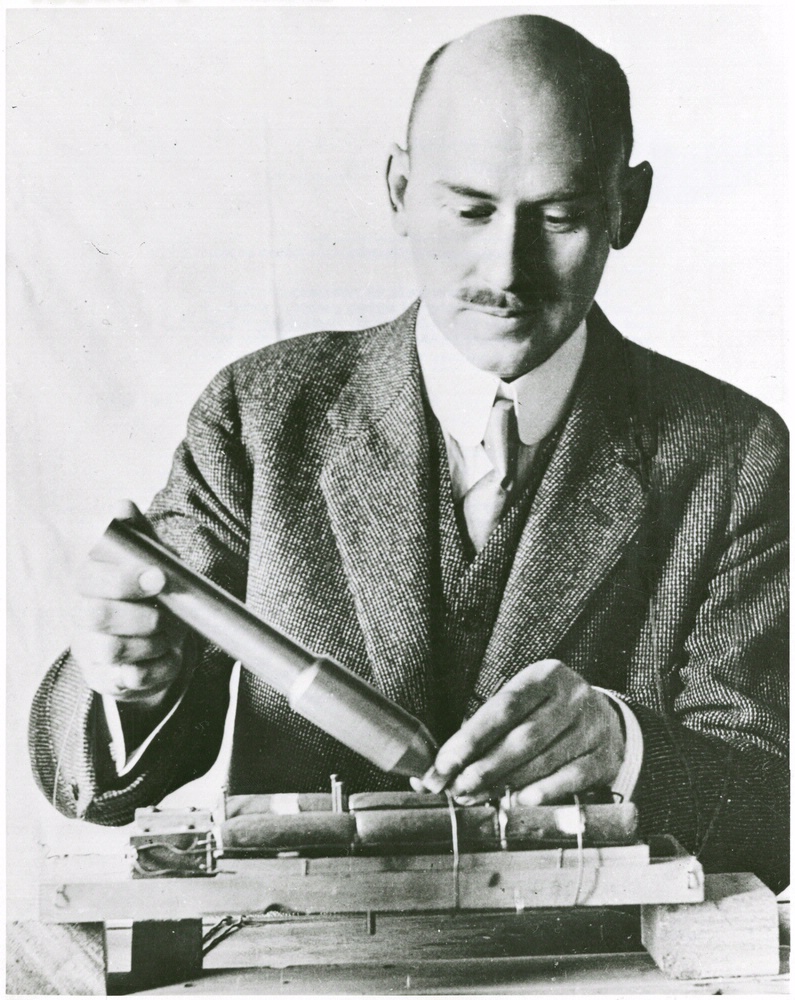
Robert Goddard Published "A Method of Reaching Extreme Altitudes"
"A Method of Reaching Extreme Altitudes" appeared as a dry 79-page Smithsonian pamphlet in January 1920. A Smithsonian press release, played up Goddard’s proposal to explode flash powder on the Moon’s night side with a rocket. The reaction was completely unexpected. Within two weeks the news spread around the world. The press sensationalized Goddard’s proposal. But space travel in science fiction and the media quickly changed. Thanks to Goddard, the rocket was clearly seen as the way to get into space.
- First commercial radio broadcast in the US
- The first German gliding competition held at the Wasserkuppe
- Nazi Party founded
- US Women get the right to vote through the 19th Amendment
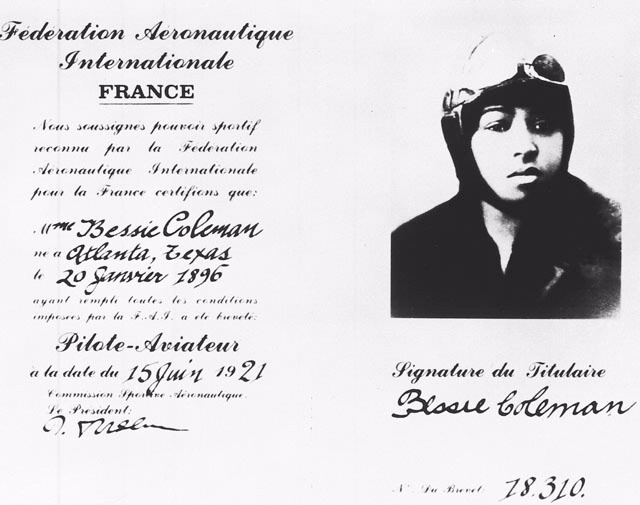
Bessie Coleman: One of the First Licensed African American Pilots
Bessie Coleman became one of the first African Americans to earn a pilot’s license and to seek a career in aviation. For the African American community, Bessie Coleman became an enduring symbol of how a talented and highly motivated person could seek out a career in aviation.
- First robot built
- Washington conference establishes world ratios for war ships and leads to construction of aircraft carriers (US/British/Japanese Treaty)

Airplane Launches from the Deck of the USS Langley
USS Langley, the first American aircraft carrier, joined the fleet in 1922 and served as the floating laboratory for naval flight operations and technology. The Navy named it after Smithsonian Secretary Samuel P. Langley, an early aeronautical experimenter.
- Benito Mussolini founds Fascist government in Italy
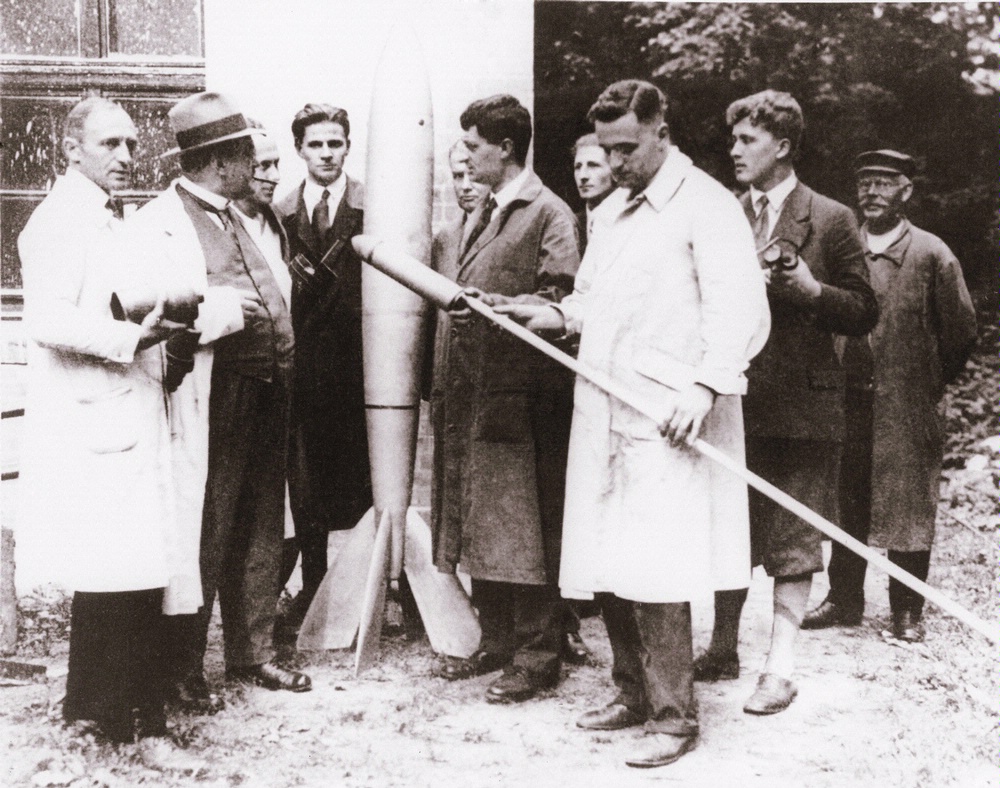
Hermann Oberth Publishes "The Rocket into Interplanetary Space"
An ethnic German from Transylvania, Hermann Julius Oberth came to his spaceflight insights before World War I. In 1923 he published the book "The Rocket into Interplanetary Space." In it he discussed the feasibility of human spaceflight, laid out the basic equations of rocketry, and described how liquid propellants could vastly exceed the performance of gunpowder rockets. Oberth’s work inspired an explosion of interest in rocketry and space travel in the German-speaking world.

The First Nonstop Transcontinental Flight
U.S. Army Air Service pilots Lt. John A. Macready and Lt. Oakley G. Kelly made the first nonstop transcontinental flight on May 2–3, 1923, in the T-2 transport. They took off from Roosevelt Field, Long Island, and landed at Rockwell Field, San Diego, 2,470 miles and just under 27 hours later. During the flight, Macready and Kelly faced flying over unknown territory at night and through storms and rain for over half the flight. The Army Air Service approved the flight to test the capability and endurance of Macready and Kelly, the new T-2 transport, and the Liberty engine. The two pilots and the T-2 also demonstrated the potential of military and commercial aircraft as practical long-distance technologies.
- Frozen food invented by Charles Birdseye

First Flight Around the World
On April 6, 1924, eight U.S. Army Air Service pilots and mechanics in four airplanes left Seattle, Washington, to carry out the first circumnavigation of the globe by air. They completed the journey 175 days later on September 28, after making 74 stops and covering about 27,550 miles. The airplanes were named for American cities and carried a flight number: Seattle (1), Chicago (2), Boston (3), and New Orleans (4). They flew over the Pacific, Indian, and Atlantic oceans and encountered climatic extremes from arctic to tropical. Only the Chicago, flown by Lts. Lowell Smith and Leslie Arnold, and the New Orleans, flown by Lts. Erik Nelson and John Harding Jr., completed the entire journey.
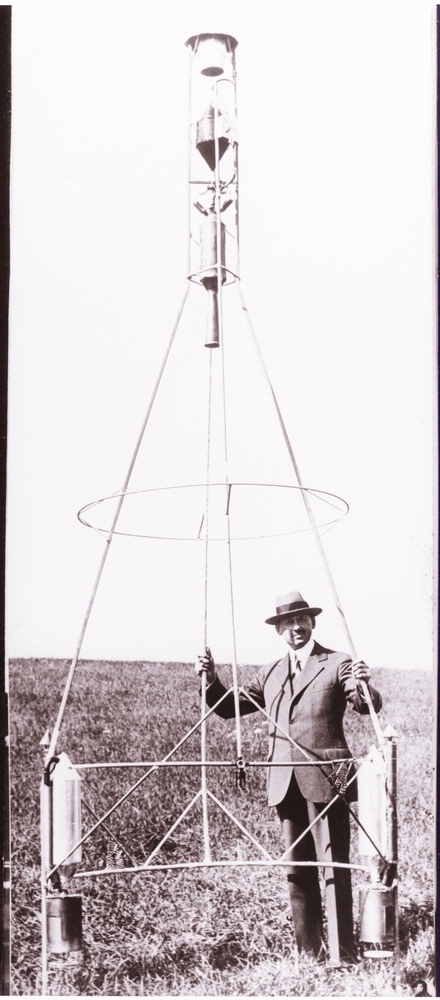
Robert Goddard Launches the World’s First Liquid-Fuel Rocket
After working to develop solid-fuel rockets for the U.S. Army in World War I, Goddard switched to liquid fuels, which had the energy needed to reach space. He quickly settled on liquid oxygen and gasoline as the most convenient propellant combination. In 1926 he was finally ready to launch his liquid-fuel rocket. On March 16 at a farm outside Worcester, it took off on a 2.5-second flight, reached an altitude of 41 feet, and covered a distance of 184 feet. It was the first liquid-fuel rocket launch in history.
- Air Commerce Act of 1926 establishes a regulatory framework for civil aviation including pilot, mechanic, and aircraft certifications.
- Air Corps Act enacted
- US Route 66 opens

Hawthorne Gray Sets Altitude Records in a Balloon
U.S. Army Air Corps balloonist Capt. Hawthorne Gray launched from Scott Field, Illinois, on November 4, 1927, on his third attempt to explore conditions and test equipment that would enable air crews to survive and function at altitudes of over 40,000 feet. The balloon was found in a tree near Sparta, Tennessee, the next day, with Gray’s lifeless body still in the basket. He had apparently become confused, parachuting a full bottle of oxygen to earth in an effort to climb even higher. He died from lack of oxygen. “His courage,” suggested the citation of his posthumous Distinguished Flying Cross, “was greater than his supply of oxygen.”
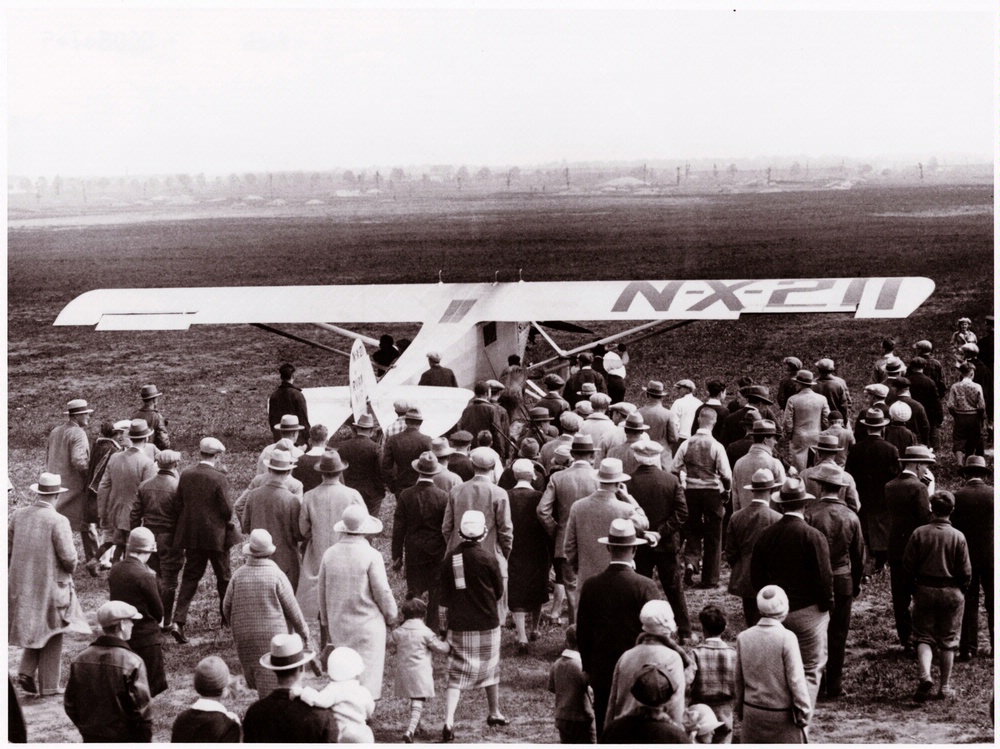
The First Solo, Nonstop Transatlantic Flight
On May 21, 1927, Charles A. Lindbergh completed the first solo, nonstop transatlantic flight in history, flying his Spirit of St. Louis from Long Island, New York, to Paris, France. In 1919 New York hotel owner Raymond Orteig offered a $25,000 prize for the completion of the first nonstop flight between New York and Paris. Early in 1927, Charles Lindbergh obtained the backing of nine St. Louis investors to compete for the prize. Lindbergh contacted Ryan Airlines in San Diego to build an airplane for the flight. To honor his supporters, he named it the Spirit of St. Louis. When he successfully reached Paris, Lindbergh became a world hero who would remain in the public eye for decades. His flight touched off the “Lindbergh boom” in aviation—aircraft industry stocks rose in value, and interest in flying skyrocketed.

The Spirit of St. Louis Tours Latin America
Dwight Morrow, U.S. ambassador to Mexico, was the catalyst for Lindbergh’s tour of Latin America. He had met Lindbergh on the young aviator’s trip to Washington after his transatlantic flight. Morrow believed Lindbergh might help seal the diplomatic rift between Mexico and the United States. The State Department approved the flight and suggested the tour be extended to other places in Latin America. U.S. involvement in Nicaragua had created bad feelings toward the United States, and the State Department hoped Lindbergh’s tour would improve the nation’s standing in Central America.
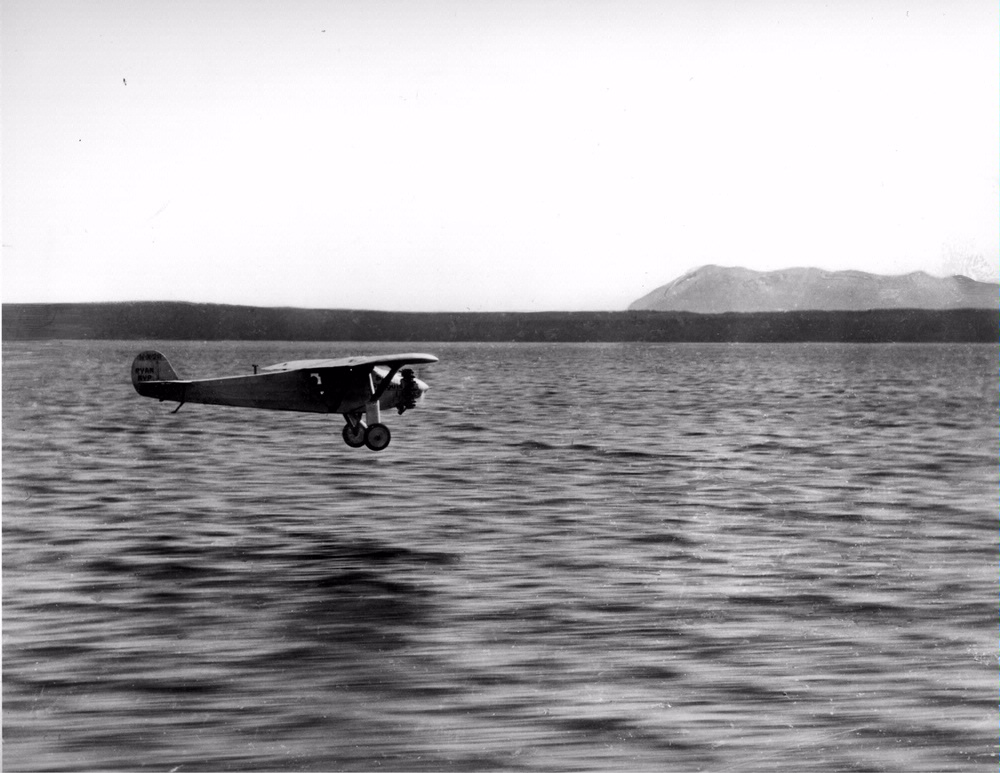
The Spirit of St. Louis Tours the United States
To take advantage of public interest in Lindbergh after his transatlantic flight, the Daniel Guggenheim Fund for the Promotion of Aeronautics sponsored a tour in 1927 in which Lindbergh flew the Spirit of St. Louis to all 48 states. The tour’s goals were to stimulate interest in aviation, encourage use of existing commercial mail and passenger air services, and promote the development of airports and communications by air. The Guggenheim Fund estimated that 30 million saw the Spirit along the way. The tour enhanced the public’s perception of Lindbergh as a hero and of the Spirit as a national icon. It also made him an acknowledged expert on aviation, a role he played nearly to the end of his life.
- First electronic TV system invented by Philo Taylor Farnsworth
- First motion picture with sound appears, "The Jazz Singer"
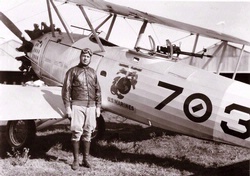
Frank Schilt Receives the Medal of Honor
Lt. C. Frank Schilt received the Medal of Honor for his daring rescue of 18 wounded Marines and Nicaraguan National Guardsmen from Quilali, Nicaragua, in 1928. He joined the Marine Corps during World War I and became an aviator in 1919. Schilt served in Santo Domingo, Haiti, the Dominican Republic, and Nicaragua through the 1920s.
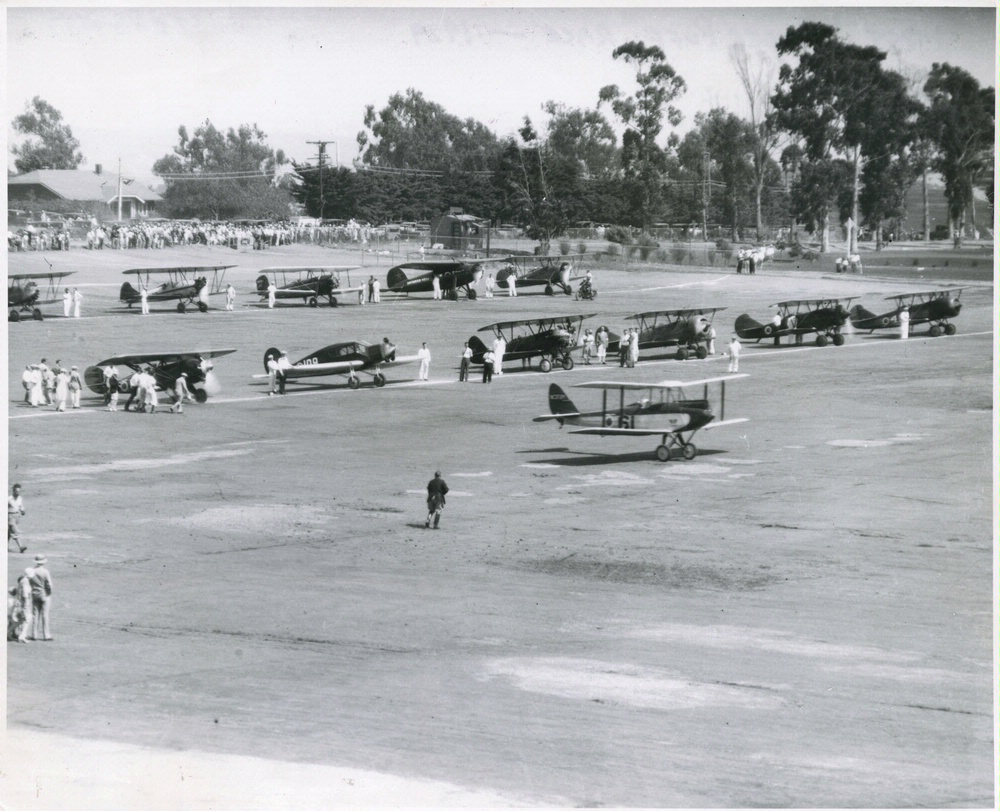
First Women's Transcontinental Air Derby
Humorist Will Rogers dubbed it “The Powder Puff Derby,” but those in the 1929 Women’s National Air Derby, the first sanctioned race for female pilots, took it quite seriously. Flying from Santa Monica, California, to Cleveland, 15 of 20 finished (Earhart placed third), proving women could handle a rugged cross-country race. The public loved it too. People flocked to see the “Flying Flappers” at every stop. The women pilots were often called “Ladybirds,” “Angels” or “Sweethearts of the Air.” Amelia Earhart wrote, “We are still trying to get ourselves called just ‘pilots.’”
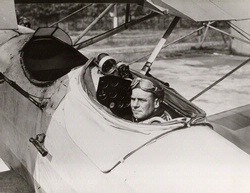
Flying Blind: Enabling All-Weather Flight
The Daniel Guggenheim Fund for the Promotion of Aeronautics was established in 1926 to address aviation issues related to education, research, technology, and the airplane’s integration into everyday life. Assisted by the government and industry, the fund set up the Full Flight Laboratory at Mitchel Field, Long Island, New York. Doolittle, with his doctorate in aeronautical engineering and experience flying experimental aircraft, joined the team as test pilot. One major challenge Doolittle tackled was all-weather flight. He made the first “blind flight” (flying entirely by instruments), and the technologies he helped develop became standard equipment on all-weather aircraft—and remain so today.

Founding of the Ninety-Nines
A few months after the first Women’s National Air Derby, a group of women pilots met to form an organization for social, recruitment, and business purposes. Ninety-nine became charter members, inspiring the organization’s name, and Amelia Earhart became their first president. Today the Ninety-Nines International Organization of Women Pilots is headquartered in Oklahoma City.

The Growth of Private Flying
In 1929 private flying was mainly for wealthy sportsman pilots. Because truly safe and inexpensive aircraft were hard to find, Harry Guggenheim organized the International Safe Aircraft Competition, sponsored by his father’s Daniel Guggenheim Fund for the Promotion of Aeronautics. The Chummy and six other aircraft failed to qualify, while five others withdrew. The Curtiss Tanager won but was too expensive and difficult to build. Homebuilt light planes such as the Heath Parasol or Pietenpol Air Camper and the powered glider-style Aeronca C-2 soon appeared. But ultimately, the Taylor/Piper Cubs offered flight schools, clubs, and the general public what they wanted: a truly practical, affordable, versatile, and fun light airplane.
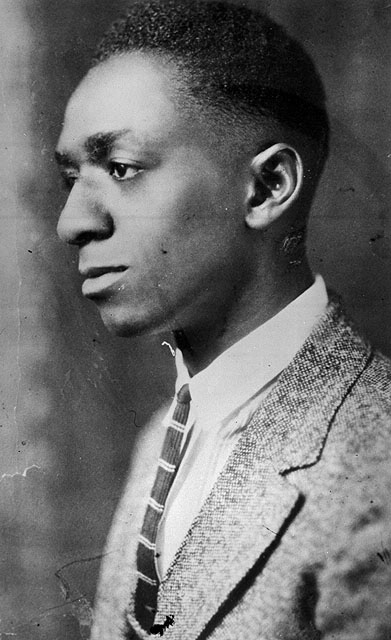
William J. Powell Founded the Bessie Coleman Flying Club in Los Angeles
William J. Powell led a small group of black air enthusiasts in Los Angeles during the 1920s. He established the Bessie Coleman Flying Club and sponsored the first all-black air show.
- First commercial transcontinental flights across the US
- Graf Zeppelin around-the-world flight
- Great Depression begins (Black Tuesday)
- Herbert Hoover takes office

American Interplanetary Society Is Established
A group comprised mostly of science fiction writers formed the American Interplanetary Society in New York City in 1930. The fact that science fiction writers predominated was unique to America. It reflected that genre’s flourishing and the dearth—with the exception of Robert Goddard—of serious space theoreticians in America. This explosion of space fantasy in the 1920s and ’30s was a double-edged sword for spaceflight advocates. It inspired young people to believe in the possibility of space travel but convinced many adults that the idea was absurd.
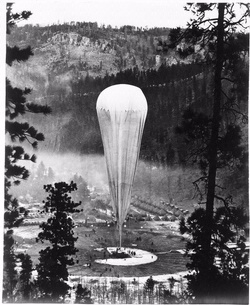
The Race to the Stratosphere
Balloons offered one great advantage over airplanes—they could climb to the very roof of the sky, where there is too little air to provide lift for wings or to support air-breathing engines. As a result, they became essential research tools, enabling scientists to study conditions in the upper atmosphere and to develop and test equipment and techniques that would protect aviators at high altitudes. During the 1930s, teams from the United States and Europe made repeated attempts to capture and hold the world’s absolute altitude record—an unofficial race to the stratosphere for national prestige and new scientific knowledge.
- First recorded cure with penicillin in England
- The first commercially successful car radio sold by Gavin Manufacturing Corporation (patent to William Lear)

Doolittle Wins Bendix Trophy
Flying the Laird Super Solution, Doolittle won the inaugural 1931 Bendix Trophy race, flying from Burbank, California, to Cleveland, Ohio, at an average speed of 223 miles per hour over a distance of 2,043 miles.
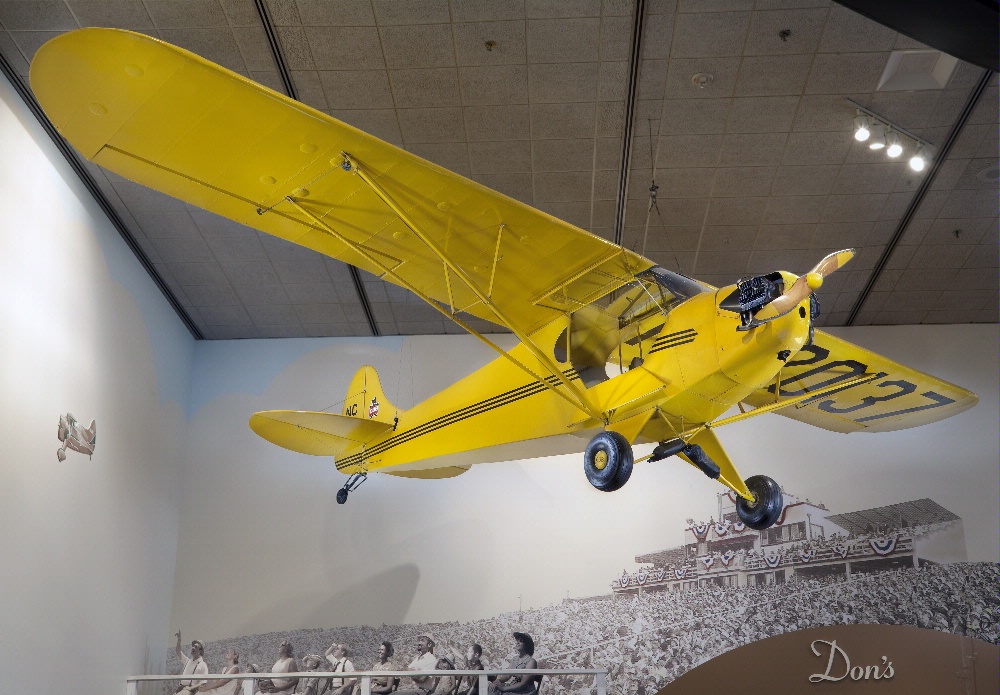
First Taylor Cub Produced
The Cub was simple, slow, safe, and affordable—perfect for a beginner pilot. Since 1931 thousands of pilots have learned to fly in Cubs. Early J-2s came in several colors, but yellow soon became the Cub standard. The planes became so popular that people started calling all light airplanes “Cubs.”
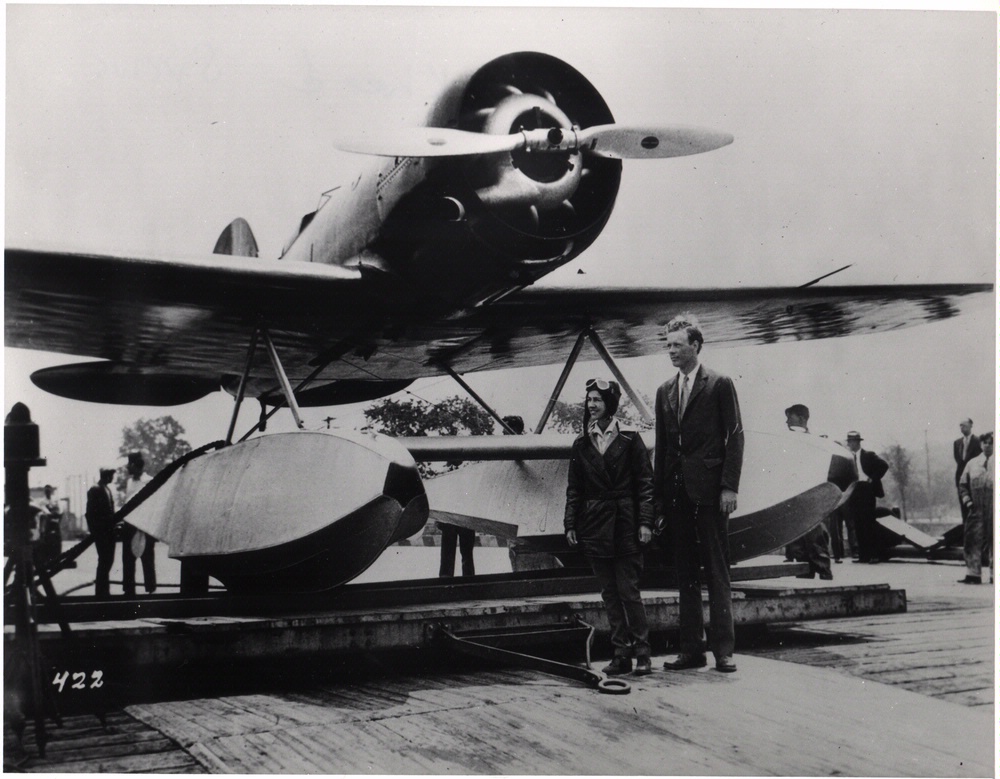
The Lindberghs’ 1931 Survey Flight
In 1931 and 1933, Charles and Anne Morrow Lindbergh embarked on two lengthy trips over vast expanses of water and uncharted, unpopulated territory, exploring possible overseas airline routes during the pioneering days of international air travel. The remote flights also offered some relief from the endless public scrutiny that had followed Charles Lindbergh since 1927. Charles Lindbergh described their 1931 trip as a vacation flight with “no start or finish, no diplomatic or commercial significance, and no records to be sought.”
- Germans Max Knott and Ernst Ruska co-invent the electron microscope
- Japan invades Manchuria
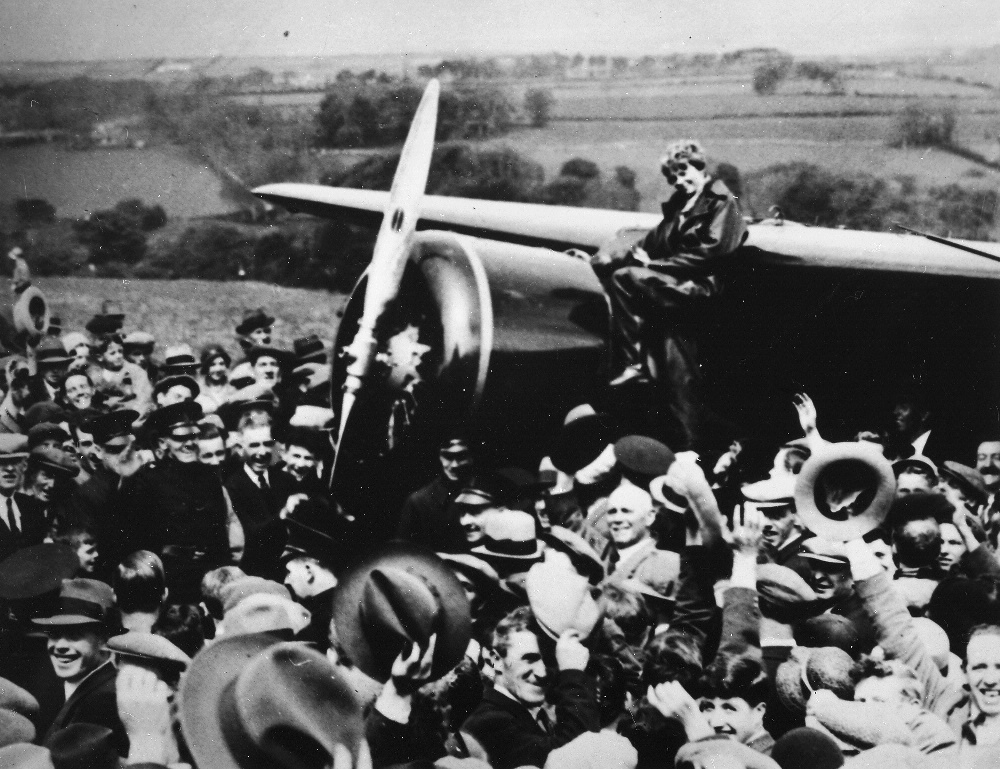
Amelia Earhart Solos the Atlantic
Please visit our Amelia Earhart Deep Dive page for the the most updated and complete information from the National Air and Space Museum on Amelia Earhart. On May 20–21, 1932, Earhart became the first woman—and the only person since Charles Lindbergh—to fly nonstop and alone across the Atlantic. Flying this red Lockheed Vega, she left Harbor Grace, Newfoundland, Canada, and landed 15 hours later near Londonderry, Northern Ireland. The feat made Earhart an instant worldwide sensation and proved she was a courageous and able pilot. Later that year, Earhart flew the Vega to another record. On August 24–25, she made the first solo, nonstop flight by a woman across the United States, from Los Angeles to Newark, New Jersey, in about 19 hours.

Doolittle Wins the Thompson Trophy
James H. "Jimmy" Doolittle won the 1932 Thompson Trophy race at an average speed of 253 miles per hour. It took all of Doolittle’s flying skill to keep the unstable and unforgiving barrel-shaped Gee Bee R-1 Super Sportster under control.
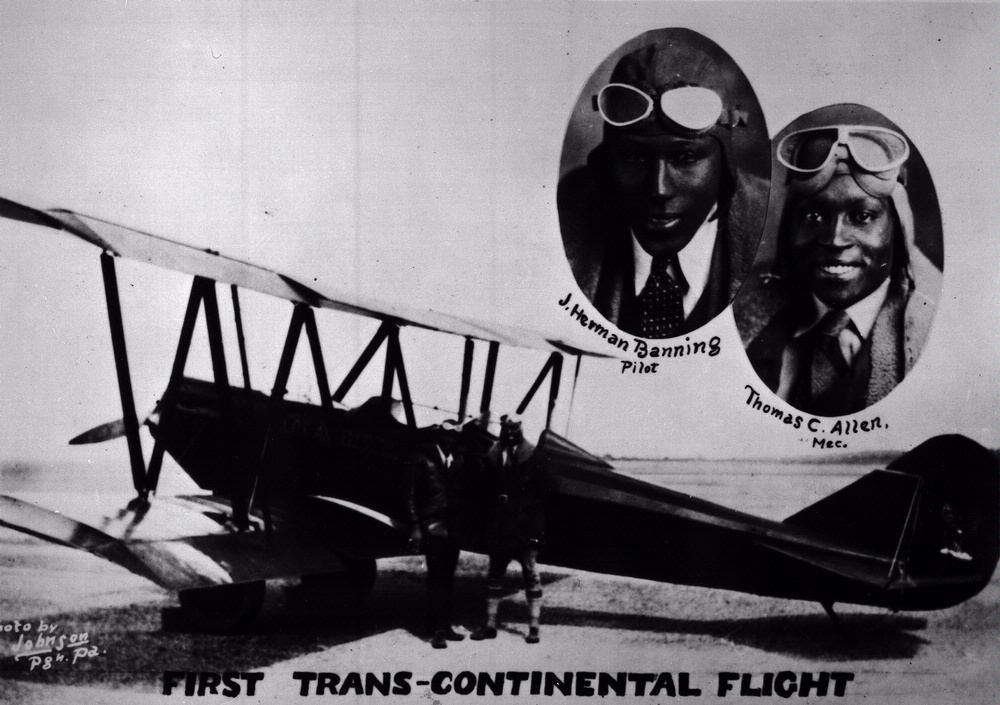
James Herman Banning and Thomas Allen Complete the First Transcontinental Flight by Black Airmen
Flying from Los Angeles to New York, Banning set a new record for black pilots and paved the way for other pioneering black aviation record setters. Long-distance flying offered a dramatic way for African American pilots to showcase their flying skills. James Herman Banning emerged as one of the most talented barnstorming pilots. In 1932 Banning and Thomas C. Allen completed the first transcontinental flight by black airmen.

The Lindberghs' 1933 Survey Flight
In 1931 and 1933, Charles and Anne Morrow Lindbergh embarked on two lengthy trips over vast expanses of water and uncharted, unpopulated territory, exploring possible overseas airline routes during the pioneering days of international air travel. The remote flights also offered some relief from the endless public scrutiny that had followed Charles Lindbergh since 1927. The 1933 flight arose from international interest in developing commercial air routes. Pan American Airways and four other airlines undertook a study of possible Atlantic routes. As Pan American’s technical advisor, Charles Lindbergh was sent to survey a route from Newfoundland to Europe.
- Italo Balbo leads flight of 24 flying boats from Rome to Chicago World's Fair
- Aeronautical recovery of the Polar explorers on the Soviet ship Cheliuskin
- FDR is inaugurated and introduces the New Deal
- Hitler is appointed Chancellor of Germany
- Prohibition repealed
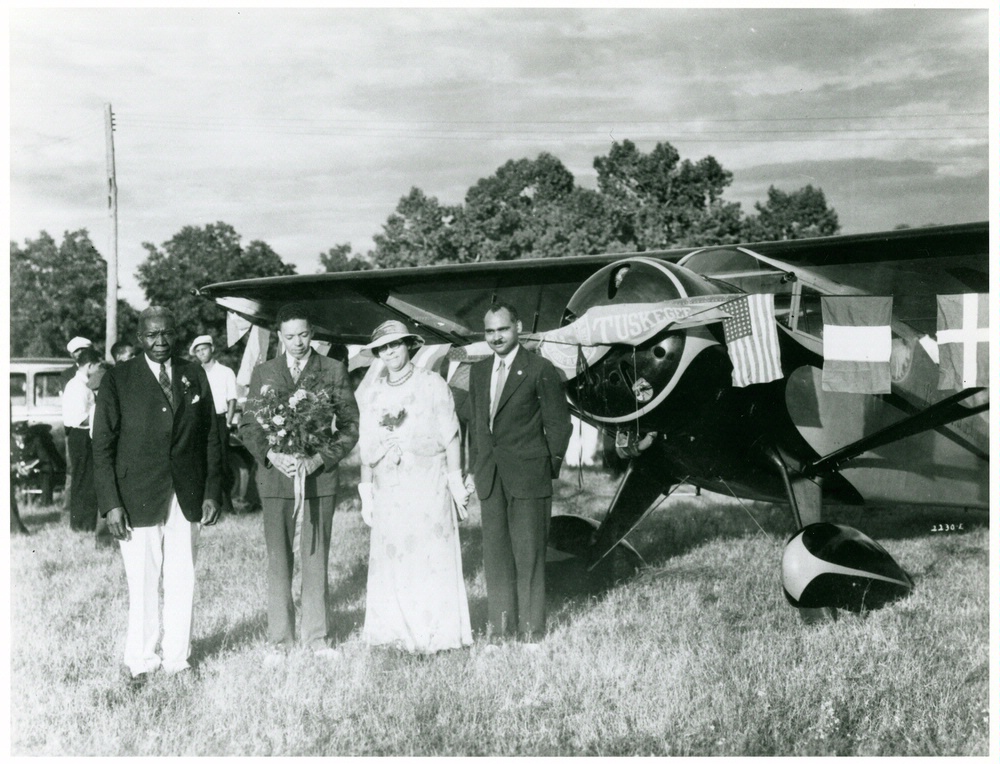
C. Alfred Anderson and Albert E. Forshythe Complete the “Goodwill Flight” of 1934
For their celebrated Pan-American “Goodwill Flight” of 1934, Anderson and Forsythe flew a Lambert Monocoupe they dubbed the Spirit of Booker T. Washington. The goal of the “goodwill flight” was to show the skill of black aviators and to enhance racial understanding.
- USSR joins the League of Nations
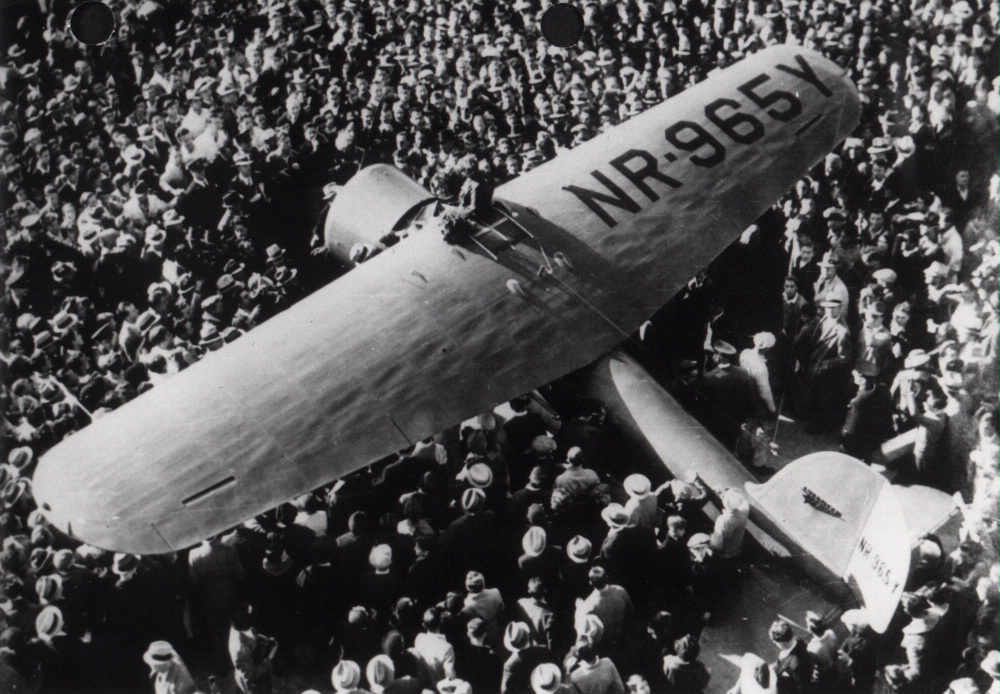
Earhart Solos the Pacific
On January 11–12, 1935, Amelia Earhart became the first person to fly solo from Hawaii to the U.S. mainland. Though some called it a publicity stunt for Earhart and Hawaiian sugar plantation promoters, it was a dangerous 2,408-mile flight that had already claimed several lives. Earhart’s nearly 19-hour flight across the Pacific took her 600 more miles over water than Charles Lindbergh’s famous transatlantic trip. Ten fliers before her had died trying to make the dangerous flight. Later that year, Earhart made record flights from Los Angeles to Mexico City and from Mexico City to Newark, New Jersey. She also placed fifth in the 1935 Bendix Race. “I wanted the flight just to contribute. I could only hope one more passage across that part of the Pacific would mark a little more clearly the pathway over which an air service of the future will inevitably ply.” —Amelia Earhart

Explorer II Establishes World Altitude Record
November 11, 1935, Albert W. Stevens and Orvil Anderson ascended in Explorer II from the Stratobowl, a smooth hollow in South Dakota’s Black Hills. They reached 72,395 feet, a world altitude record that would stand for two decades.
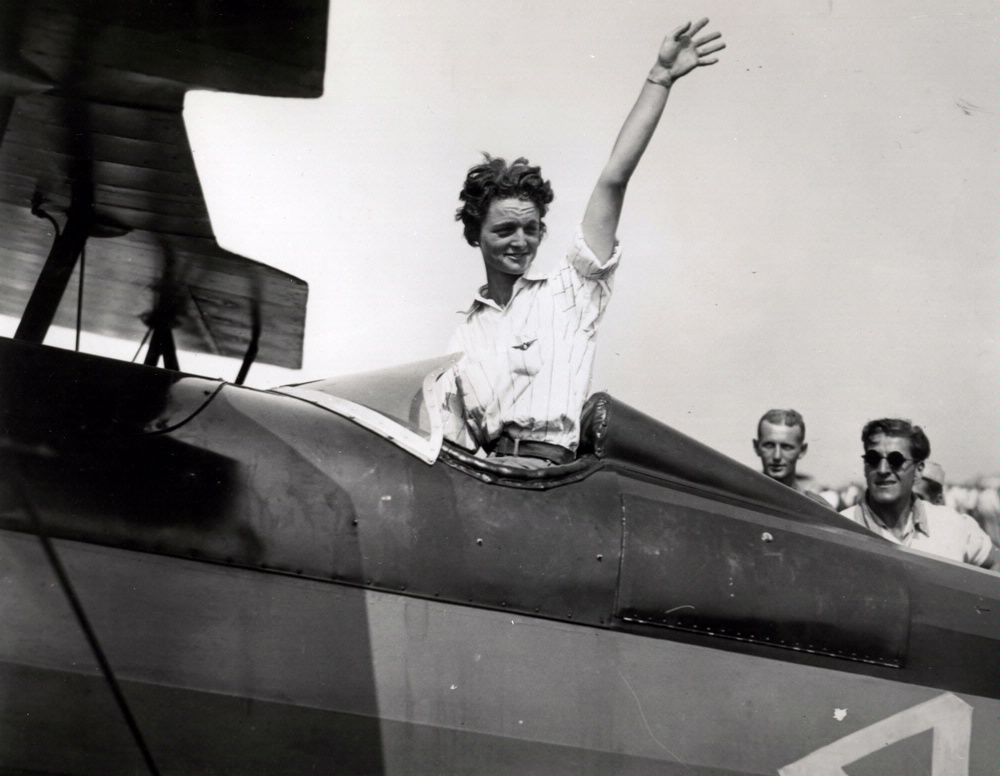
Louise Thaden Wins the Bendix Trophy
Louise Thaden becomes the first woman to win the Bendix Trophy. Have you ever heard of Louise Thaden? She was famous for holding three women’s world flight records at once: speed, altitude, and solo endurance records.
- First flight of the Douglas DC-3, one of the most successful commercial airliners
- Robert Watson-Watt patented radar
- Wallace Carothers and DuPont Labs invent nylon (polymer 6.6)
- Mussolini invades Ethiopia
- Remilitarization of Germany
- Works Progress Administration established in US for public works projects and employment opportunities
- Academy of Model Aeronautics founded
- The Guggenheim Aeronautical Laboratory of the California Institute of Technology began sounding rockets experiments under Theodore von Karman
- Berlin Olympics
- The Spanish Civil War begins

Amelia Earhart and Fred Noonan Disappear on Round-the-World Flight
Please visit our Amelia Earhart Deep Dive page for the the most updated and complete information from the National Air and Space Museum on Amelia Earhart. The page you're on is experiencing errors. On May 21, 1937, Amelia Earhart and navigator Fred Noonan began a round-the-world flight, beginning in Oakland, California, and traveling east in a twin-engine Lockheed Electra. They departed Miami on June 1 and reached Lae, New Guinea, on June 29, having flown 21 of 30 days and covered 22,000 miles. They left Lae on July 2 for their next refueling stop, Howland Island. They never found it. Following a massive sea and air search, on July 18, 1937, they were declared lost at sea.

First Piper Cub Produced
The first Cub was completed on November 2, 1937 The Cub was simple, slow, safe, and affordable—perfect for a beginner pilot. Ultimately, the Taylor/Piper Cubs offered flight schools, clubs, and the general public what they wanted: a truly practical, affordable, versatile, and fun light airplane.
- First Russian trans-polar flight
- Japanese invasion of China
- Freeze-dried coffee is invented
- Anschluss\Austria joined Germany
- Kristallnacht targets Jewish citizens in Germany

Congress Passed the Civilian Pilot Training Act (CPTP)
The federally funded Civilian Pilot Training Program (CPTP) offered blacks unprecedented opportunities for flight training, although on a segregated basis. Cornelius Coffey obtained a CPTP franchise for Chicago in 1939 on the eve of World War II.
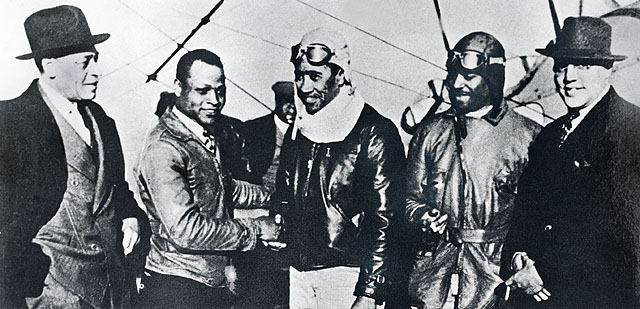
Dale White and Chauncey Spencer Complete Goodwill Flight
Chauncey Spencer and Dale White complete a demonstration flight from Chicago to New York to Washington, D.C. in 1939. At the nation’s capital, Spencer met with Harry S. Truman, then a senator from Missouri, and other political leaders to advocate an end to racial exclusion in aviation.
- FDR signs Public Law 18 that mandates the Army Air Corps to train blacks
- The Spanish Civil War ends
- World War II begins in Europe
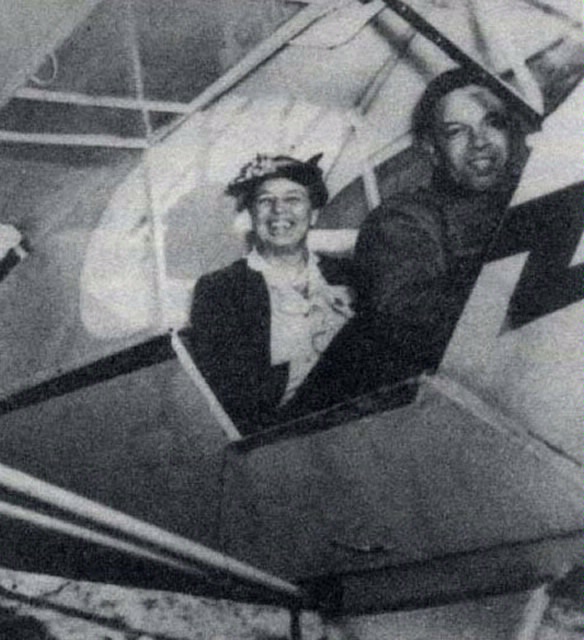
Eleanor Roosevelt Flies on Airplane Piloted by Charles C. “Chief” Anderson at Kennedy Field, Tuskegee Institute
First Lady Eleanor Roosevelt became an air enthusiast and openly promoted racial equality in the American armed forces.
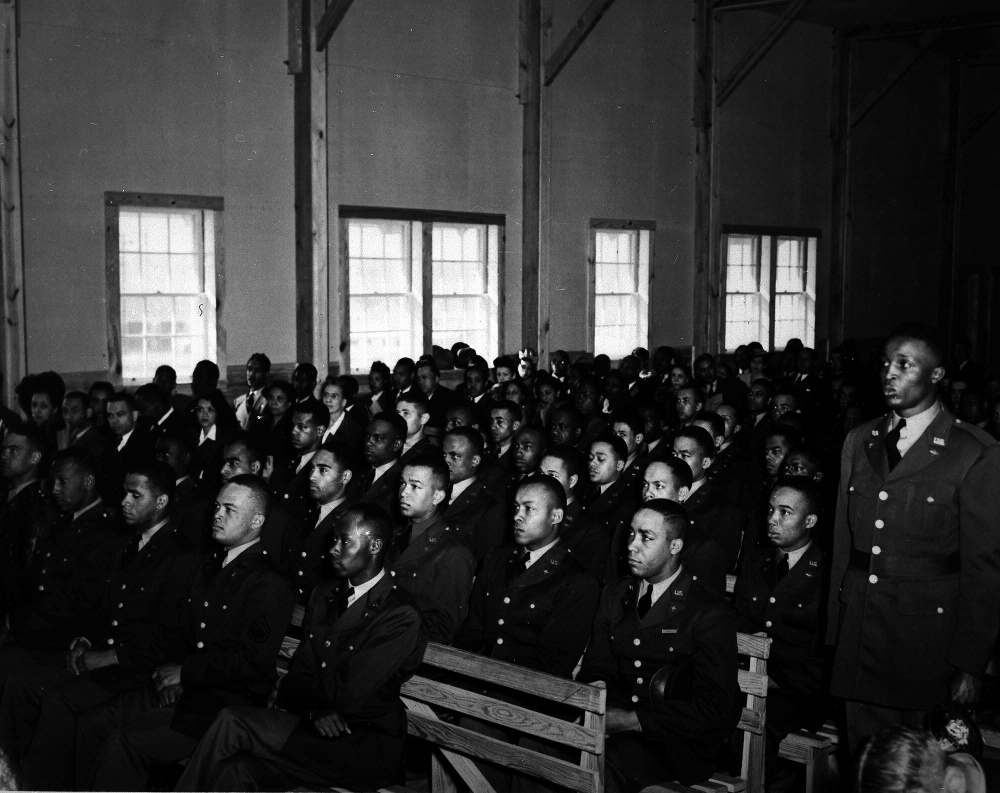
The First Class of Aviation Cadets Entered Training at Tuskegee Institute
The Army Air Corps established Tuskegee Army Air Field in 1941 near Alabama’s Tuskegee Institute, which had been a center for training blacks to fly. Although segregated and greeted with hostility by many, the training facility marked a milestone for African Americans. The curriculum was identical to other air training facilities. White officers ran most of the pilot training. As base commander, Noel Parrish made sure the program was fair and evenhanded, which enhanced morale among the cadets.
- Japan attacks Pearl Harbor (US Enters World War II)
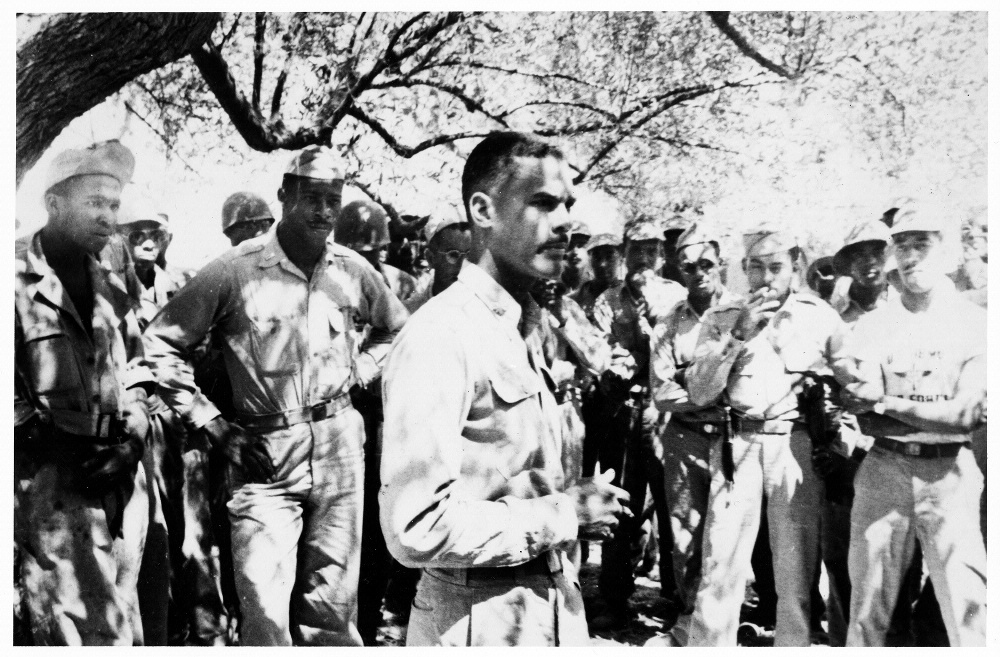
Lt. Colonel Benjamin O. Davis, Jr. Named Commander of the First African-American Air Combat Unit
Benjamin O. Davis Jr. led the Tuskegee airmen during World War II in air combat over North Africa and Italy and long-range bomber escort missions over Nazi Germany. Davis led the 99th and later the 332nd Fighter Group in Europe during World War II. His inspired and disciplined leadership played a major role in the Tuskegee Airmen’s success. Under Davis, the 332nd escorted American bombers in missions over the Mediterranean and central Europe.
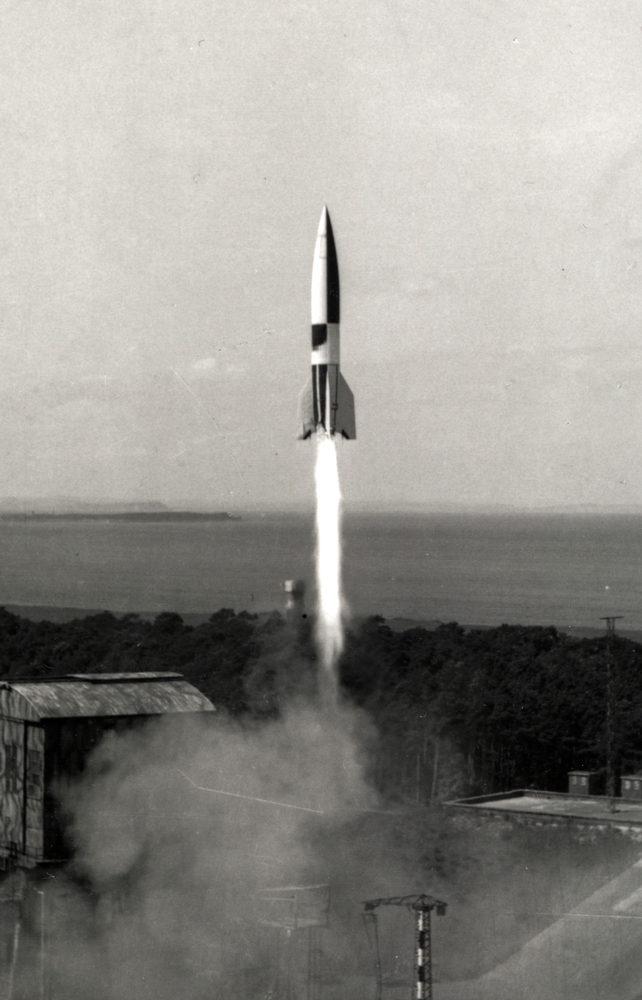
First German V-2s Become Operational and Are Launched Against Paris and London
Two months before the Nazis came to power in 1933, physics student Wernher von Braun left the Raketenflugplatz Berlin (Rocketport Berlin), the world’s largest, most active rocket group, to work on rocket weapons for the German army. Von Braun’s establishment made a breakthrough to large-scale rocket engineering. It created the world’s first operational ballistic missile: the V-2.
- Freeman field protests against segregated officers’ clubs begins
- World War II ends in Europe
- World War II ends in the Pacific







